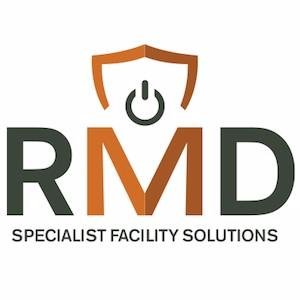
NHS Greater Glasgow and Clyde Health Board
NHS Greater Glasgow and Clyde (NHSGGC) is the largest NHS board in Scotland and one of the largest in the UK. It serves a population of 1.2 million and employs 44,000 staff. RMD Power and Cooling was appointed to fully refurbish a live data centre with limited downtime for changeover.
Challenge
As part of a national initiative, NHSGGC was in the process of installing a major new patient management system which would become central to the operation of the hospitals in the area. Part of the system needed to be hosted in a facility which had been identified to be upgraded to data centre standards.
The existing eight-rack facility was not equipped to meet the new requirements so RMD was appointed to refurbish the room. Since servers in this location held critical information, the site had to remain live during construction.
As part of the project, it was essential that RMD maximised the space available to fit in more equipment while improving energy efficiency and cutting the power consumption of the data centre. An additional challenge was presented by the limited budget available for the project.
Solution
In order to ensure minimal downtime, the project had to be completed in two stages. RMD fully refurbished one side of the data centre before the IT team transferred the equipment so that work could start on the other side. Working in two phases, RMD installed a computer room ceiling, constructed a raised floor and redecorated the room.
RMD supplied and installed 27 rack cabinets and a 2N electrical system including two 160kVA Riello UPS (uninterruptible power supply) with separate battery systems. The rack cabinets were configured with cable management and two rack PDUs sourced from each feed to provide the 2N at rack level. The PDUs installed by RMD can be remotely monitored and provide data about energy consumption that can be used by the IT team to make planning decisions. This information also enables the IT team to accurately calculate the cost of energy used by each piece of equipment.
Due to space constraints, a slimline Cannon in-row cooling system was installed. With a footprint of just 200mm, compared with the standard 300mm system from APC, it provides highly effective precision cooling of servers and UPS equipment at rack level.
Two chillers installed in a N+1 redundant configuration were installed to provide the cooling for the data centre. The energy efficiency of this project was also improved by the installation of free cooling dry air fans which, in cooler weather, take over from the chillers to provide free cooling.
As the data centre holds critical patient data, the structural integrity of the room is paramount. APC Netbotz security and environmental monitoring equipment was installed to warn of any threats. RMD also liaised with the incumbent fire suppression maintainer to ensure works did not interfere with the existing system and that complete coverage was maintained throughout the life of the project.
Results
Demonstrating strong project management skills and building relationships with other providers involved on the site, RMD completed all works on time and to the customer’s satisfaction. By planning effectively and managing the client’s expectations, RMD delivered maximum return within the allocated budget.
The decision to complete the works in two phases was a clever but simple approach to the problem of keeping the data centre live throughout the project and demonstrated RMD’s management and design capabilities. During the project, there were only two instances of downtime which were scheduled in advance and carried out at a suitable time to enable the transfer of equipment.
Thanks to the use of a narrow footprint in row cooling system, the refurbished data centre is a highly effective use of space, with the installation of more than three times as many racks as the original facility. RMD’s installation of security and monitoring equipment has also given the NHSGGC IT team the confidence that their data centre is safe and secure around the clock.
Cutting the carbon footprint and associated energy costs of the data centre was at the heart of this project. By installing cutting edge equipment and designing the room in a way that greatly enhances the effectiveness of the cooling system, RMD has significantly reduced the amount of power wasted at this site. The installation of dry air cooling technology also means that the data centre will benefit from full and partial free cooling throughout the year.
In order to test the efficiency of a data centre, the European Union in the Code of Conduct for Data Centre Efficiency recommends PUE as the ideal metric. PUE, or power usage effectiveness, refers to the ratio of the total electricity supplied to a data centre against the power consumption of IT equipment. A PUE value of 2.0 or above indicates unnecessary wastage while an energy efficient data centre should aim to achieve a measurement of around 1.2.
On completion of the room and nine months in to the use of the space, NHSGGC is currently achieving an annual average PUE of 1.46 based on the design provided and implemented by RMD. This further underlines RMD’s success in helping NHSGGC meet its target of energy efficiency as well as providing a modern data centre environment for the mission critical equipment to be housed within.
Finally, RMD has since been appointed by NHSGGC to deliver the ongoing maintenance of this facility for a total of five years.





